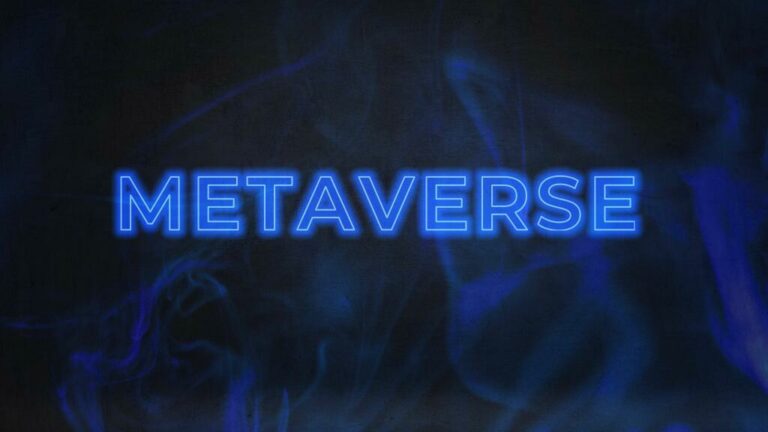For instance, airlines are notably prone to franchise danger due to unforeseen events, corresponding to flight delays and cancellations attributable to climate or mechanical failure. While such incidents are thought of operational risks, they can be extremely damaging. Investments with higher anticipated returns (and larger volatility), like shares, are usually riskier than a more conservative portfolio that is made up of less volatile investments, like bonds and money.
- Establish the name of the project, who conducted the danger matrix analysis, and the date and site of the evaluation.
- To keep away from this, you’ll have the ability to involve all the staff members you contemplate related to get their input on danger chance and potential unfavorable consequences.
- Use this digital template to determine issues in processes or products.
- Risk evaluation is the process of identifying danger, understanding uncertainty, quantifying the uncertainty, working models, analyzing results, and devising a plan.
- Minimize your business’ vulnerability to unexpected occasions and potential threats with a digital software like SafetyCulture.
- Qualitative risk analysis is the bottom for quantitative threat evaluation and reduces project uncertainty whereas specializing in high-impact dangers.
A well-designed and applied danger administration framework may help to identify and mitigate dangers more effectively, reducing total risk levels. On the other hand, a poorly designed or implemented framework can lead to elevated danger ranges and potential adverse consequences for the organization. In project management, a risk evaluation matrix helps make clear dangers and forecast their potential influence on the project as a complete. Most danger administration strategies begin by prioritizing each threat on the matrix and allocating the sources needed to tackle essentially the most impactful ones. Since it is virtually unimaginable to overcome every single threat, professional PMs need to know how to decide their battles and mitigate those that pose probably the most risk to general project success. The mostly used method for danger evaluation is thru the use risk matrix.
Danger Tolerance Vs Threat Capacity
Leaders from totally different industries use danger analysis to make sure that all features of the enterprise are protected against potential threats. Performing regular danger evaluation additionally minimizes the vulnerability of the business to sudden events. The outcomes may additionally be assessed utilizing risk management tools corresponding to situation evaluation and sensitivity tables. A scenario evaluation shows the best, center, and worst consequence of any occasion. Separating the totally different outcomes from finest to worst offers an affordable spread of insight for a danger supervisor.

The probability gets higher if you think about the upper returns, and solely contemplate the worst 1% of the returns. The Nasdaq 100 ETF’s losses of 7% to 8% represent the worst 1% of its performance. We can thus assume with 99% certainty that our worst return won’t lose us $7 on our funding. We can even say with 99% certainty that a $100 investment will solely lose us a maximum of $7.
Understanding The Fundamentals Of Threat Administration
Moreover, updating the risk matrix at regular intervals is a great way to give novice PMs and new project teammates more experience with the complete course of. When utilizing a risk management plan, it could be helpful to have a threat administration plan template that’s easy to distribute to workers and update when needed. Without a template, it may be tough to make use of or create a danger management plan for the entire business. Types of risk analysis included in quantitative risk evaluation are business influence analysis (BIA), failure mode and results analysis (FMEA), and danger benefit analysis. Examples of qualitative risk instruments embody SWOT evaluation, cause and impact diagrams, determination matrix, recreation principle, and so on. A agency that wants to measure the impact of a safety breach on its servers may use a qualitative risk technique to assist prepare it for any lost earnings which will occur from an information breach.

This device allows Environment, Health, and Safety (EHS) professionals conduct thorough threat assessments, having 5 ranking ranges for every part for a more accurate analysis. With the 5×5 threat matrix defined, in comparability with different versions like 3×3 and 4×4, the 5×5 model offers a more thorough means of score dangers using a 5-point scale. Finally, efficient threat management can also have a positive influence on an organization’s reputation and model image. By demonstrating a dedication to managing risks, organizations can build trust with their stakeholders, together with clients, traders, and employees. This can result in increased loyalty, improved monetary performance, and a aggressive advantage within the market.
There might be a staff member who is more skilled or experienced in the threat. Of course, it’s higher to assign the task to the right person, but equally necessary in making sure that each threat has a person answerable for it. Use this free Risk Matrix Template for Excel to handle your tasks better. While risk assessment matrices tend to be extremely accessible and straightforward, some users might need some remaining questions surrounding their utilization or application. Depending on the project, the exact dangers concerned, and the elements of these dangers, some further threat categories could have to be established.
Making A 3×3 Risk Matrix
Any risk that might have a reasonable impression and might happen “occasionally” leads to an impression score of 9 (3 x 3). On the highest end of the scale, a danger that may have a “catastrophic” influence on the project and happens “frequently” finally ends up with a risk impression score of 25 (5 x 5). Explore financial impacts and safety measures that can assist your organization avoid a data breach, or within the event of a breach, mitigate costs. While adopting a risk administration normal has its advantages, it is not with out challenges. The new commonplace may not easily fit into what you are doing already, so you could have to introduce new ways of working. And the requirements would possibly want customizing to your industry or enterprise.

This threat matrix template allows you to visualize your project risks in one color-coded graph to classify them by chance and severity. This permits you to higher perceive essentially the most important risks in your project. There are a number of quantitative and qualitative threat evaluation strategies. To help, we’ve ready some free risk evaluation templates to help you by way of the chance analysis process.
How To Perform Danger Analysis
That’s why large or complex initiatives usually need a 4×4 or 5×5 risk matrix. When using a danger matrix, no matter measurement, it’s essential to remember the numerical values assigned to each chance and severity ranking. This makes it simple to calculate a numerical value for each one of many project’s risks as you simply must multiply the likelihood that it’s to happen by the severity of its impression.

So, how do you handle one thing as seemingly elusive as project risk management? Can your group additionally enhance by adopting risk management into its day by day routine? Building a threat management protocol into your organization’s tradition by creating a consistent set of threat management instruments and templates, with training, can scale back overhead over time.
Management typically takes the data and determines one of the best course of action by evaluating the probability of danger, projected financial impact, and model simulations. Management may request to see totally different scenarios run for different risks primarily based on totally different variables or inputs. Most often, the aim of a risk evaluation is to higher perceive how threat will financially impression a company. This is usually calculated as the chance value, which is the likelihood of an event happening multiplied by the value of the event.
“Any agency operating in a aggressive market should focus its consideration on modifications within the external setting that might impair its capability to create value for its prospects,” Simons says. Economic, technological, environmental, and aggressive elements introduce obstacles that corporations must not solely manage but overcome. Let’s say that initially of 1970 you determined to take a position $10,000 into one of the three hypothetical asset-allocation models show beneath.
A company could have already addressed the most important risks of the company by way of a SWOT evaluation. Although a SWOT evaluation might prove to be a launching point for further dialogue, danger analysis typically addresses a selected question whereas SWOT evaluation are sometimes broader. Some dangers may be listed on both, however a risk analysis must be extra specific when making an attempt to address a specific downside. Explore Strategy Execution—one of our on-line technique courses—and download our free strategy e-book to realize the insights to build a successful strategy.
Before the identified risks may be added to your danger evaluation matrix, you’ll need to determine your danger criteria. This primarily means organizing all risks according to their probability and severity. However, the factors you in the end use is dependent upon the exact sizing of your threat matrix. Risk administration is the process of identifying, assessing and controlling monetary, authorized, strategic and safety risks to an organization’s capital and earnings.

Another frequent sizing, the 4×4 danger matrix is for large initiatives that don’t require the level of granular detail that the 5×5 threat matrix supplies. Depending on its usage, nonetheless, the 4×4 threat matrix may end in too many risks falling right into a “medium” impact ranking. In instances like this, it’s rather simple for risks to be mislabeled, and as such, some mitigation strategies would possibly fall to the wayside. Three important steps of the danger administration course of are threat identification, risk evaluation and evaluation, and risk mitigation and monitoring.
This may be achieved by way of regular risk assessments, coaching packages, and the use of know-how to observe and analyze dangers. It is necessary for organizations to grasp that effective threat administration is an ongoing course of that requires fixed attention and adaptation. This implies that danger administration methods and strategies should risk level definition be regularly reviewed and up to date to ensure that they proceed to be relevant and effective in addressing new and emerging risks. Additionally, organizations ought to consider investing in risk administration coaching and schooling for workers to guarantee that everyone is conscious of potential dangers and the method to manage them.
However, even essentially the most conservative portfolio can expertise short-term losses due to ever-changing market situations. This is why it is essential to have a diversified portfolio that features a extensive variety of investment choices. Once you know where you fall along the chance spectrum, the next step is to become familiar with typical performance information in your portfolio. The extra you know about what you presumably can count on, the smaller the chance that you’ll react emotionally when times get tough. The commonest varieties are the 3×3 risk matrix, 4×4 risk matrix, and 5×5 risk matrix. Explore the intricacies of environmental aspects and impacts of the organization’s practices to boost the company’s sustainability, compliance, and aggressive advantage.
Risk severity ranges provide a quantifiable measurement of the risk posed by any given risk. In a 5×5 risk matrix, there are 5 different severity levels (negligible, marginal, average, important, and catastrophic). A 4×4 threat matrix has 4 totally different severity ranges (negligible, marginal, critical, catastrophic), while a 3×3 threat matrix has three completely different severity levels (marginal, average, and critical). After you’ve determined the numerical danger impact rating for any given danger, compare it to the record beneath to determine whether it poses a low, medium, high, or excessive risk to project success. For example, a danger that may have a negligible impact on the project’s success and is considered “improbable” or unlikely to occur would have a risk influence score of 1 (1 x 1).
Grow your business, transform and implement technologies based on artificial intelligence. https://www.globalcloudteam.com/ has a staff of experienced AI engineers.